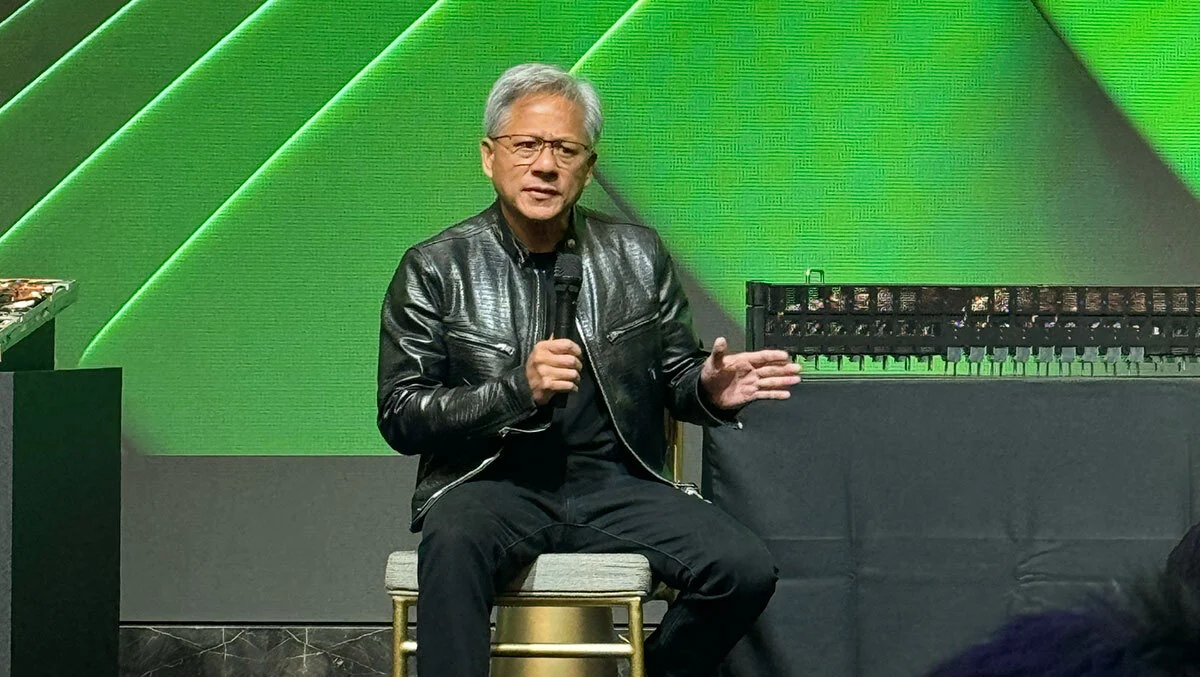
Candid insights from NVIDIA's CEO Jensen Huang
At a recent press conference, NVIDIA CEO Jensen Huang offered a comprehensive look at the company's future, addressing pivotal issues ranging from high-bandwidth memory (HBM) partnerships to advancements in AI technology and strategic industry collaborations. The event, rich with full quotes, highlighted NVIDIA's commitment to innovation and its strategic positioning in the tech industry.
The session opened with a question about NVIDIA's HBM partners. Jensen Huang candidly responded, "HBM memory is very important to us because we need very high-speed memories and very low-power memories. We work with three partners: SK Hynix, Micron, and Samsung. All three of them will be providing us HBM memory, and we’re trying to get them qualified and adopted into our manufacturing as quickly as possible."
Another attendee asked about NVIDIA’s potential collaboration with Intel for chip manufacturing. Huang’s succinct response, "My interest remains," indicated ongoing engagement without divulging specifics.
A question about the application of AI in gaming was raised, and Huang elaborated, "You are going to see that we already use AI for neural graphics. We can achieve very high-quality ray tracing path tracing 100% of the time and still achieve excellent frame rates. In the future, we'll even generate textures and objects so that the objects will be lower resolution and we can generate higher resolution textures."
The debate of proprietary versus open AI technologies was brought up, and Huang emphasized, "Whether it's proprietary or open, the most important thing is whether it creates value for the ecosystem, whether it drives innovation, and whether it creates opportunities for everybody. NVIDIA has done that."
When asked about NVIDIA’s partnership with Arm, Huang was enthusiastic, "Our partnership with Arm is fantastic. We’re working on Grace, our CPU designed specifically for AI and high-performance computing. Our relationship with Arm is very strong."
Another focal point was AI's transformative potential. Huang asserted, "AI is the most powerful technology force of our time. It will revolutionise every industry, and NVIDIA is at the forefront of this transformation. From GPUs to software libraries like CUDA and TensorRT, we are enabling the next wave of AI advancements."
NVIDIA's next-generation GPUs were also discussed. Huang hinted, "50 series is going to be something I will tell you about later. I can't wait to tell you about the next generation."
Another topic of concern was the sustainability of data centres and energy consumption. Huang underscored the efficiency of accelerated computing: "Accelerated computing should be the way that people use computing today. It saves power. For example, climate simulation in Taiwan uses 3000 times less power with accelerated computing [compared with traditional approaches to weather forecasting]."
A question about the impact of tech giants developing their own AI chips was also addressed. Huang clarified, "NVIDIA is not just an accelerator; it is accelerated computing. Our architecture is versatile, and used in every single cloud. When cloud vendors increase their capacity of NVIDIA, the revenue goes up."
The rapid cadence of NVIDIA’s chip releases was another subject of interest. Huang explained, "We hired more engineers and created AI engineers. Our chips are designed with NVIDIA-created AIs, helping us move incredibly fast." This theme of AI being used to accelerate NVIDIA's lead against rivals came up regularly during the session.
We raised concerns about pricing strategies and how customers perceive value in NVIDIA’s products. Huang responded, "Pricing is always based on value. If a product is priced properly, the demand is incredible. Our demand is incredible."
"We have to build the entire system, develop all the software, and then we break it up into a whole bunch of parts, and we sell it to you as a chip. But in the end, we're really selling the AI infrastructure. All the software that goes along with it is integrated into your software."
Huang likened NVIDIA’s approach to a historical analogy, "Back in the old days, Microsoft delivered the operating system or Excel office via a floppy disk. So the question is, does Microsoft sell floppy disks? No, that's just the delivery vehicle. In a lot of ways, our chips are delivery vehicles for the concept of the software of the infrastructure of AI factories."
On the topic of energy efficiency, Huang proudly stated, "We have driven down the energy consumption by 3,000 times in eight years. Moore's law couldn't have possibly come close to that. We have driven down the cost of training [models like GPT 4] by 350 times in ten years."
When asked about AI use in battery-constrained devices like laptops, Huang explained how they're designing the chips and stated, "RTX is battery-constrained. The way we do it is called Race to Sleep. Get your job done, go to sleep."
A question about competition from AI chip makers in China was met with a serious tone, as Huang acknowledged the competitive landscape.
Concluding the session, Huang emphasised the importance of the Taiwan ecosystem for NVIDIA's operations. "TSMC, Foxconn, Quanta, Wistron, Wiwynn, Inventec, Pegatron, Asus, MSI, Gigabyte are amazing companies. The ecosystem here is incredible."
NVIDIA's strategic vision, as articulated by Huang, underscores its pivotal role in shaping the future of AI and computing, driven by robust partnerships and relentless innovation.
.webp)

